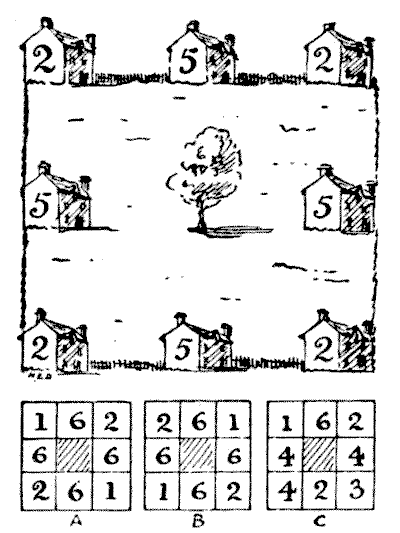In one of the outlying suburbs of London, a man had a square plot of ground on which he decided to build eight villas, as shown in the illustration, with a common recreation ground in the middle. After the houses were completed, and all or some of them let, he discovered that the number of occupants in the three houses forming a side of the square was in every case nine. He did not state how the occupants were distributed, but I have shown by the numbers on the sides of the houses one way in which it might have happened.

The puzzle is to discover the total number of ways in which all or any of the houses might be occupied so that there should be nine persons on each side. In order that there may be no misunderstanding, I will explain that although $B$ is what we call a reflection of $A,$ these would count as two different arrangements, while $C,$ if it is turned around, will give four arrangements; and if turned round in front of a mirror, four other arrangements. All eight must be counted.
Solutions: 1
This eBook is for the use of anyone anywhere in the United States and most other parts of the world at no cost and with almost no restrictions whatsoever. You may copy it, give it away or re-use it under the terms of the Project Gutenberg License included with this edition or online at http://www.gutenberg.org. If you are not located in the United States, you'll have to check the laws of the country where you are located before using this ebook.